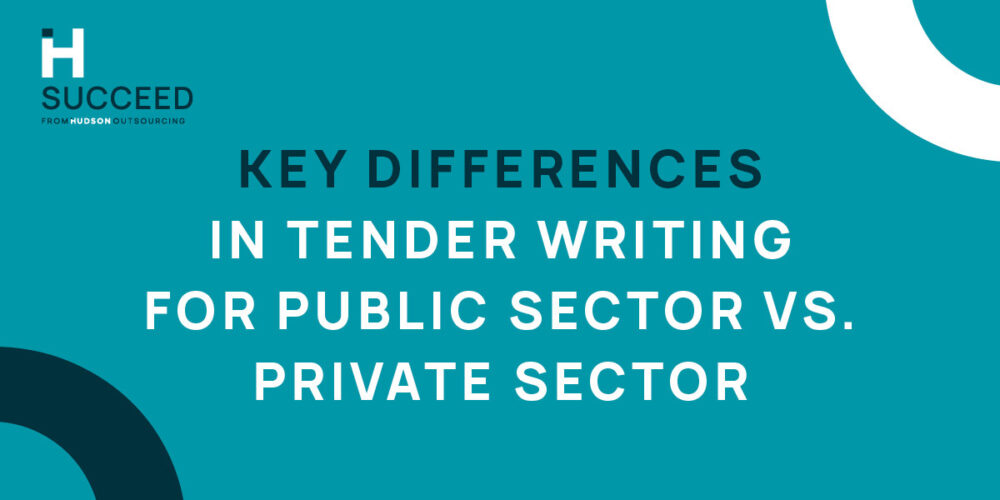Bid Writing in Technology
Last updated: Dec 17, 2021 @ 10:38 am
Bid writing in technology is by definition, technical.
Technology clients who have released a tender opportunity will need a solution to a particular requirement. More often than not, they will have a specific solution in mind.
No two tenders are the same and for many SMEs looking to broaden their horizons, this can be daunting, to say the least. Writing tenders may not be your forte, and with this in mind, it can be essential that you approach tendering for contracts in the IT sector with direction and focus.
This means that your bid will have to demonstrate how you can fulfil a specific list of technology requirements to deliver this solution.
In short, if you don’t meet these requirements. You won’t win the bid.
So, how can you demonstrate this?
Understand the Specifications
Technical Specifications can be long and sometimes it can be difficult to untangle what the Client really wants. If you have encountered difficulties in this, you’re not alone.
The team at Hudson are experts in shredding client specifications and can help you understand how to write your technology bid to take all of the requirements into consideration.
Before you start
It is key for you to ensure that your products or abilities meet the requirements of the buyer:
- Can your service or product deliver the requirements as they are?
- Can you develop existing tools to achieve the client’s requirements?
If the answer to both these questions is no, you should not bid for this technology tender as you won’t be able to deliver the end result required.
If the answer is yes, you should absolutely bid for the opportunity.
Things you need to consider
When bid writing in technology, the solution the buyer is looking for is usually an either/or consequence.
When they score your technical response, they will agree that your bid either meets or does not meet their requirements. To make your bid as strong as possible:
-
Write clearly and concisely how you will meet the technical requirements
For example, where the Client’s requirements can be broken down into separate items, demonstrate how you can deliver each of these separately.
-
Back up your statements with evidence
Show examples of your previous technology delivery and demonstrate how it met with the client’s requirements.You should also include where possible, testimonials from previous clients. It is all well and good telling a buyer that you can deliver the works, but it means more to them if one of your previous clients tells them you have previously delivered successfully.
Provide reassurance that your company has the right processes, policies, procedures and disaster recovery approaches to guarantee you are able to deliver the contract if awarded. For example, demonstrating you have the ability to continue delivering the technology solutions if your laptop breaks, or the power goes off, or a key team member becomes ill, shows how you can prioritise the client’s needs and overcome obstacles to service delivery.
It is important to show that you are an expert in your industry. However, you should take care not to include too much jargon, acronyms or specific terminology. Remember that the people reading your submission may not have the same technical understanding. (This is probably why they’re tendering!) Whilst technical information will support your bid and demonstrate your understanding, make your bid writing easy to understand for all. For example: Using acronyms like CRM, UX, and UI can mean different things to different people—and while a particular acronym may be common in your industry, it can confuse someone who doesn’t know your company. If you want to use the jargon term, explain it firstly, using it in brackets on the first example.
Bear in mind that the Client cannot award a score for anything you haven’t written. Even if you have provided dozens of contracts to the same client before, don’t assume they will score you highly. You need to state everything you want the Client to take into account during shortlisting and award. Remember the panel scoring the applications may not know you have worked with the client before. For example, saying: ‘as you’re aware we have done this for you previously’ won’t get you the top score, but stating: ‘Previously delivering software development using Agile Methodologies on [insert project name] for [insert client name]’ will help you achieve a higher score.
-
Include visuals where possible
Where the bid allows, use supporting diagrams, screenshots and anything else you can to support your arguments. It is largely underappreciated how a full A4 page of text is a lot harder to score than writing a key point and backing it up with evidence.
-
Demonstrate the benefits of your service or product
There is a good chance that everyone competing with you can deliver the same end result the Client requires. In your bid, you should be writing about how your technology is the best option for the Client. Demonstrate how it fits their needs above any other options. You should also explain the added benefits you can provide to increase the weighting of your arguments. E.g. What’s your track record in writing code? Are your engineers award-winning?
-
What information are you writing about at each stage of your bid response?
Good bids make sure that the client reads the most important information at each stage of the response. Making it as easy as possible for the scoring panel to award you the top marks for each individual response is a core skill in writing bids.
Linked to this, you need to find a balance. You should explain within your bid your proposed methods for delivering the solution to the client. You should provide enough detail for the client to be satisfied that you can not only ‘just do the job’ but exceed their expectations. For example, this can be achieved by demonstrating:
- Delivery resources, working well together developing the end result within the completion date required, and the additional support in place to ensure this service is maintained.
- Improved processes demonstrating a track record of delivering excellent quality outputs and methods for measuring and supporting this to make sure it happens during the next contract.
- Take into account all feedback, use the expertise of others to help you shape your future bid writing. Appreciate that every piece of feedback is a chance to develop your technology bid writing skills. This can even go as far as developing your business to fill gaps identified in feedback and developing the ability to recognise when not to bid, saving time and resources.
Contract disaggregation
Although this is worded quite difficultly, it, in essence, means the breaking up of contracts into smaller, more manageable sizes. A recent report carried out has shown that since 2017, the UK government have been seeking to break up larger public sector IT contracts into smaller, more accessible pieces of work. Concerns have been raised by many organisations questioning the value for money that longer, single supplier agreements offer. The benefits that contract disaggregation has are as follows:
- This makes bidding for work in the IT sector much more accessible for smaller SMEs looking to get their foot in the ladder.
- This can provide a strategy in terms of networking for SMEs, since it is possible to now forecast when larger contracts are likely to expire, allowing SMEs to form relationships with buyers to get their foot in the ladder when it comes to bidding for work.
- This also puts less strain on buyers, since lengthier, more expensive single vendor arrangements are likely to reduce, allowing more manageable levels of expenditure.
- This also provides choice, breaking away with the routine of large established suppliers and allowing buyers to seek a more diverse range of suppliers, opening the door for many new SMEs.
The key facts:
As a result of this, larger contracts are now looking to expire before 2021, allowing SMEs a chance to streamline their approach and bid for work strategically in the IT sector. Key figures published in the recent report are as follows:
- There are 42 IT contracts worth over £10m coming to an end between now and the end of 2020. These could be ripe for disaggregation given the UK governments current approach and is definitely something for SMEs looking to establish themselves to keep an eye on.
- Opportunities could be open for all. There is approximately £3bn worth of public sector IT contracts expiring before the end of 2020, meaning companies of all sizes will have a chance to bid for work.
- There are 2,773 IT contracts set to come to an end before 2020, 343 of which have a total value of £1m. It is key that buyers prepare for contracts like these coming to an end, allowing them to get a head start on the competition.
- Reports have shown that UK public sector spends an estimated £242 billion per year on procurement. In recent years, it has been shown that there has been a public drive to award contracts of all sizes to smaller firms, with the UK government setting an ambitious target of 33% of procurement spends going to SMEs by 2022.
Ways you can get a head start on the competition:
Companies looking to bid for work in the IT sector can often be faced with large amounts of other fresh and hungry companies going for the same opportunities as them. In an industry which is so innovative and ever-changing, it is essential that you act responsively and look to the future when approaching tendering. Top ways you can get a head start on your competitors are as follows:
Find out what contracts are coming to an end, research who the incumbent supplier is and research what contracts are relevant to you. This will allow you to approach tendering with as much ammunition as possible.
One tip which we would suggest is looking at tender documents for the contracts you are interested in. This will allow you to plan tender responses well in advance and forecast what type of work will be required from you. Whilst the renewal contract may not be identical and the buyer may be asking slightly different questions, having this background knowledge is a good foundation to start with.
-
Have your policies and corporate literature in place
You may be an IT company providing software and have only been running for 6 months. Set yourself targets and work towards having your company policies, literature and accreditations in place before certain contracts come to an end. This will allow you to set achievable targets and forecast opportunities for company growth.
How we can help you prepare for contract disaggregation:
We offer bespoke services to companies of all sizes and our team of tender consultants offer expert advice to organisations across multiple sectors. Ways in which we can help you prepare to bid for work in the IT sector are as follows:
- Tender Ready – Our Tender Ready service allows companies who are new to public sector tendering with the best possible chance of succeeding. We organise company literature, case studies and allows you to understand what opportunities are right for you based on your skillset and experience. Let’s say you are an SME who specialise in vehicle tracking software, we will help your company bid for work that is right for you and allow you to hit the ground running with any future IT contracts that come up for renewal.
- Tender Improvement – This package was developed to support businesses who are already tendering for work but not seeing success. Included in the package is a full analysis of your previous tender responses, re-development of corporate literature and 12-months access to the Hudson Discover portal of your choice. Once complete, our team can either write your next bid on your behalf OR guide you through two.
- Tender VLE – Our Tender VLE service is free and offers organisations looking to understand tendering with digestible and easy to understand videos regarding all things tendering. We understand that not every SME can afford to pay for services, hence it is our aim to make public sector tendering accessible for all. Your product or service that you offer may be the next big thing in the IT sector and having a basic understanding of tendering will allow you to bid for work effectively and showcase your innovation in the best possible light.
Technology Tenders
Are you currently looking for new opportunities in the tech sector? Hudson is formed of eight strands which work in tandem to drive our client’s businesses forward, one of which is Hudson Discover.
Hudson Discover houses ten sector-specific tendering portals, including Technology Tenders. We offer a free live demo of the platform to give you an idea of the tenders we source, where we find them and how the portal can generate new business for your organisation.
In Conclusion
To conclude, tendering in the IT sector can often be a daunting prospect for any SME. However, building the right kind of foundational knowledge along with sector insights can set your organisation up to succeed in tendering. We offer four dedicated services to support companies of all different sizes. Our team has decades of bid writing experience in the technology sector and they proudly hold an 87% success rate.
Support
Writing a bid for a client requiring a technology service/product should be a fairly straight forward process. As a technology expert, you will have the understanding to help deliver the solution the client needs. The hard part will be how you clearly demonstrate all your skills, experience, abilities, previous successes and proposed approaches into the bid. To write a strong bid, you should consider who will be scoring the bid, what they will want to read and how they want to read it.
If you’re unsure how you should write your technology bid, if you feel you need further advice on writing technical bids, or just wish to learn more about tender writing in general, get in touch with our Hudson Succeed team today.
Alternatively, have a look at our virtual learning environment, Tender VLE, the first of its kind to provide advice and tips on all things tendering.
Find more helpful tips and advice in our blogs. We cover topics including:








